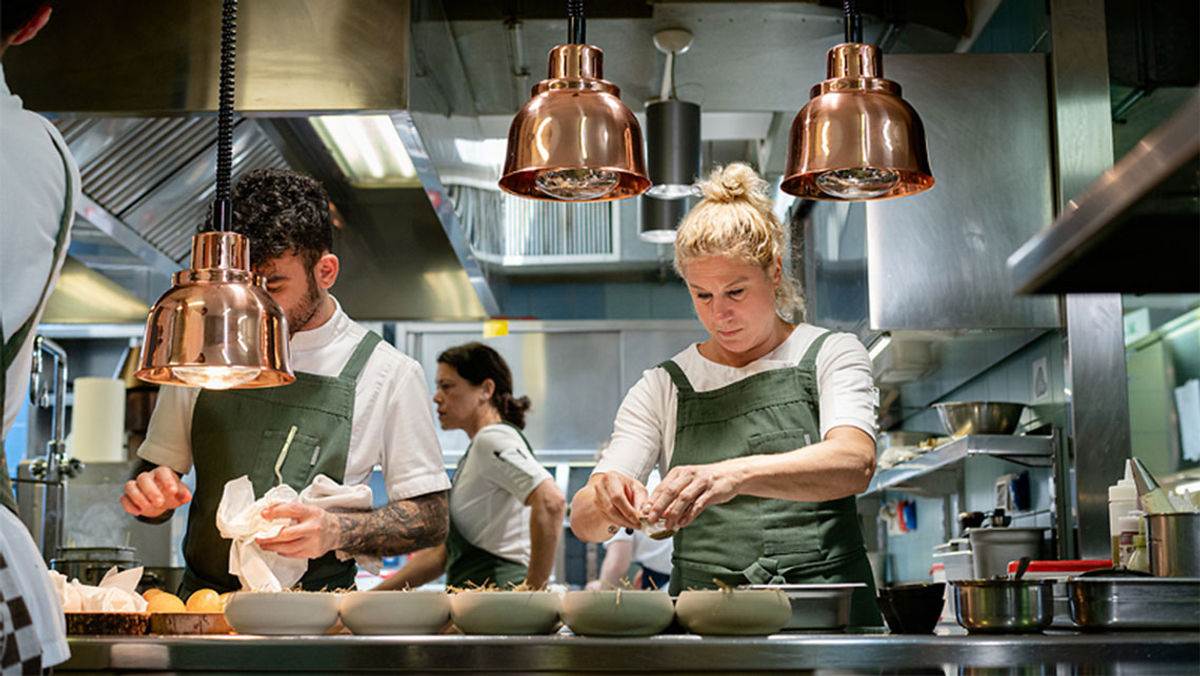Phrases like “farm to table,” “locally sourced ingredients” and “seasonal cuisine” have become ubiquitous on menus in the past decade or so as a way to both lure and educate prospective diners. After all, who doesn’t love the idea of a chef plucking produce from her kitchen garden for that night’s dinner?
But increasingly, these concepts are as much about sustainability of resources and the welfare of local farmers, fisheries and other purveyors as they are about great-tasting food.
To that end, the United Nations observes Sustainable Gastronomy Day every year on June 18 — the observance began in 2017 by the U.N. General Assembly, Unesco and the Food and Agricultural Association — with the aim of highlighting culinary diversity while protecting the planet for future generations.
It probably comes as no surprise to the foodies among us that Europe is ahead of the curve on sustainable agribusiness, since the EU as a whole tends to take “green” practices seriously across all aspects of life — including tourism.
How can travelers participate in sustainable gastronomy on their European vacation? Probably the easiest way is to consult their destination’s Michelin Guide, which defines the concept like this: “Sustainable Gastronomy … takes into account where ingredients are from, how they are produced and the methods by which they are delivered to local markets and, ultimately, our plates.”
In addition to the much-vaunted stars that Michelin bestows on restaurants and chefs every year, a separate category, the Green Star, “highlights restaurants at the forefront of the industry when it comes to their sustainable practices. These restaurants hold themselves accountable both for their ethical and environmental standards and offer dining experiences that combine culinary excellence with outstanding eco-friendly commitments.”
Celebratory cooking in Finland
The Nordic countries tend to hog the limelight when it comes to culinary awards in Europe, but this year the owners of Nolla in Helsinki — Albert Franch Sunyer, Carlos Henriques and Luka Balac — are putting competition aside to raise awareness of zero-waste fine dining. On July 26 and 27, they will invite chefs from six leading restaurants across Finland and in Denmark to mark Nolla’s sixth anniversary — and its reopening after an extensive renovation — by cooking together.
“We want to bring a bunch of chefs together to experiment with cooking without waste,” Henriques said, adding: “To take the challenge to the next level, we will be doing it without electricity.”
Participating restaurants will include Var in Porvoo on the Gulf of Finland; Wellamo in Helsinki; Hjem in Vaasa on Finland’s west coast; Kajo in Tampere in southern Finland; and Solitary in Rantasalmi; and Popl in Copenhagen.
Slovenia catches Michelin’s eyes
Not to be outdone, Slovenia drew the attention of Michelin inspectors again this year with its commitment to sustainable culinary practices.
“Unveiled today … on International Sustainable Gastronomy Day, our Slovenian selection, which includes one new Michelin Green Star, exemplifies the growing concern of local professionals about imagining the contours of a more virtuous and sustainable gastronomy,” said Gwendal Poullennec, international director of the Michelin Guide.
Galerija Okusov restaurant with chef Marko Magajne is the country’s newest Green Star recipient, bringing the total of Slovenian Green Stars to eight.
Meanwhile, Hisa Franko restaurant in Kobarid is one of only 33 restaurants worldwide that boasts three Michelin stars and a Green Star.
Helmed by chef Ana Ros, who shot to fame on Netflix’s “Chef’s Table,” the restaurant is credited with putting Slovenia on the international culinary map, and she is one of the very few female chefs with a Michelin star.
For a list of Green Star restaurants throughout Europe, visit the Michelin website.











